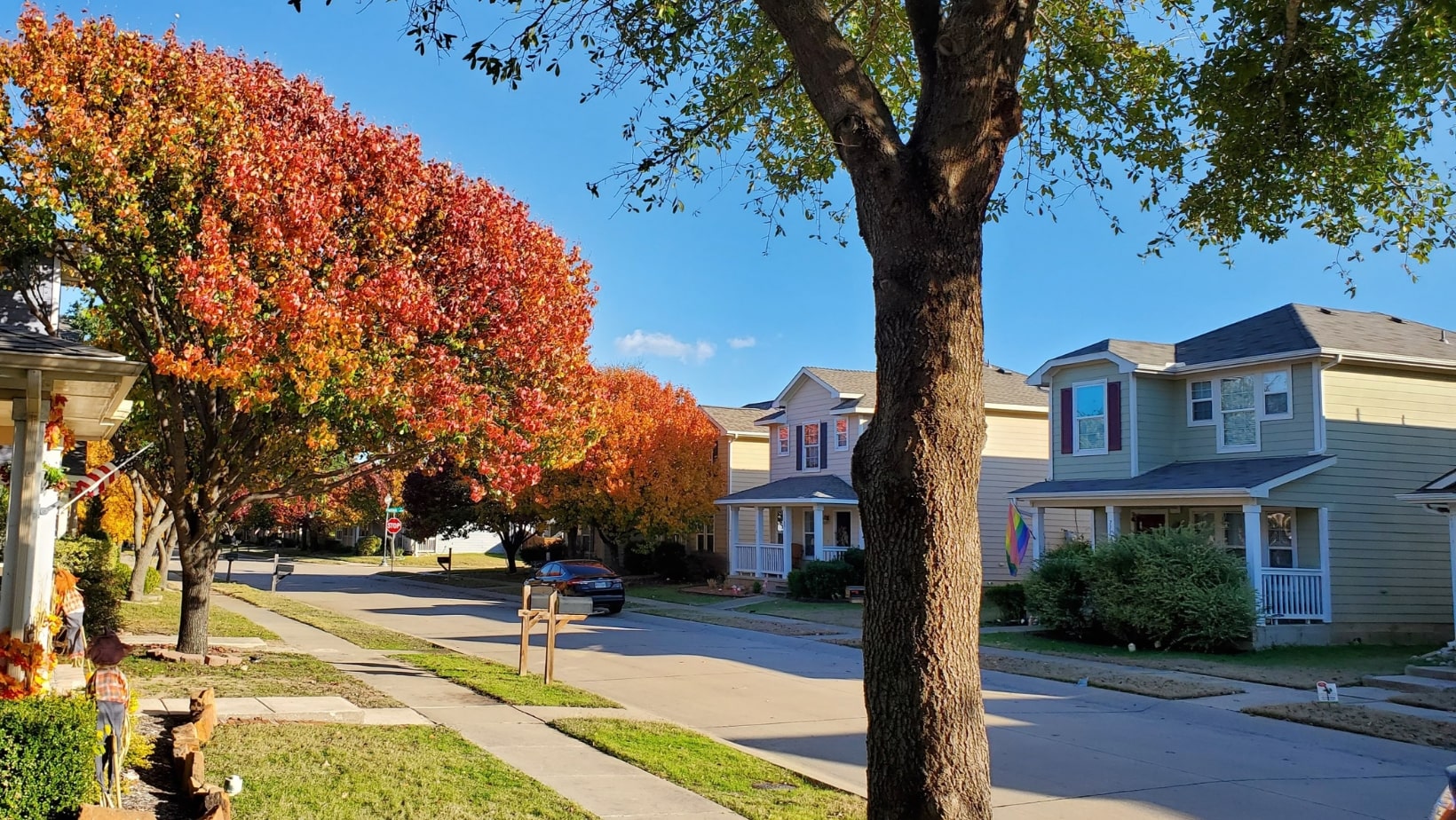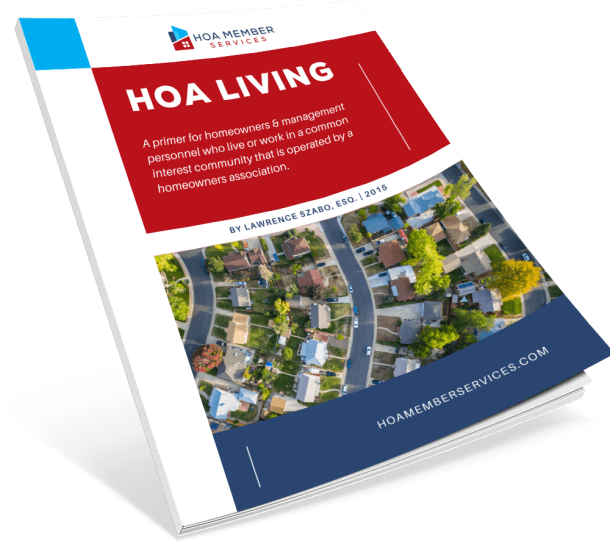Political signs often become flashpoints in neighborhoods, especially during election season, as homeowners seek to express their views. But for those living under a Homeowners Association (HOA), the right to place a sign in the yard isn’t always guaranteed.
This raises a key question: Can HOA ban political signs?
Short answer: In many cases, HOAs can place reasonable restrictions on political signs, but they generally cannot ban them outright where state laws protect political expression on private property.
While the First Amendment protects free speech, it primarily applies to governmental entities, not private organizations like HOAs. Still, several states have enacted laws limiting how much HOAs can restrict political signs, such as Texas Property Code § 202.009 or Arizona Revised Statutes § 33-1808.
Knowing your rights under state law and reviewing your HOA’s governing documents is essential before displaying any sign.
Let’s get into the details.

What Is a Homeowners Association and What Can It Regulate?
A Homeowners Association (HOA), or community association, is a private organization formed to maintain shared spaces and uphold neighborhood standards.
While HOAs offer benefits like landscaping and amenities, they also enforce HOA’s rules set out in their governing documents (such as CC&Rs, bylaws, and architectural guidelines).
What HOAs Typically Regulate
- Appearance and maintenance: From paint colors to lawn upkeep.
- Signs: Including HOA political signs and general signs policies.
- Common areas: Pools, clubhouses, and parks — all subject to HOA control.
HOAs derive their power from the governing documents, which homeowners sign upon purchase. These rules might specify size, placement, or even timeframes for posting political signs, especially during election season.
It’s essential to understand that an HOA’s authority is private property–based, not governmental. But state or local laws might prevent HOAs from being overly restrictive. For instance, Florida’s statutes limit how an HOA can regulate political signage (see Florida Statutes § 720.304).
Political Signs and the First Amendment
Political signs are a classic expression of free speech, protected under the First Amendment of the United States Constitution. While the Amendment shields individuals from government censorship, it applies only to governmental entities, not private organizations like a homeowners association (HOA).
That distinction is key when determining whether an HOA can regulate or prohibit political signs. Still, even though HOAs are not directly bound by the First Amendment, many state and local laws step in to protect homeowner expression on private property.
For instance, California’s Civil Code § 4710 limits how much an HOA may restrict political signs, and Illinois has similar protections during election season.
However, HOAs may still regulate political signs in ways that support aesthetic consistency, like limiting size, duration, or placement, as long as those restrictions are reasonable and uniformly enforced across the community association.
In short, the First Amendment protects your right to display political signs from government suppression, but when an HOA’s rules and regulations intersect, state law often serves as your strongest defense — and a solid understanding of both is essential before posting any sign.

Can HOAs Ban Political Signs? Understanding the Limits
The short answer: Not completely. An HOA’s authority to prohibit signs hinges on its governing documents, balanced against state and local laws.
HOA Powers vs. Homeowner Rights
- HOA’s rules may prohibit large or improperly placed political signs, citing aesthetic or safety concerns.
- However, most states prohibit HOAs from imposing a total ban on posting political signs.
- For instance, Indiana law forbids HOAs from banning political signs entirely on residential lots during election season, though size or placement limits may still apply.
Reasonable Restrictions vs. Unlawful Prohibitions
HOAs may regulate political signs when it comes to:
- Size (e.g., max 24″ x 18″)
- Placement (setback from sidewalk or street)
- Duration (only within 30 days prior to an election)
These restrictions must be reasonable and fairly enforced across your community association. If they aren’t, you may challenge them under your state law or through your HOA’s appeal process.
Understanding this balance before displaying signs helps ensure your rights and your community’s standards remain protected.

What the Governing Documents Say
Your HOA’s governing documents, typically the declaration of covenants, conditions, and restrictions (CC&Rs), bylaws, and architectural guidelines, serve as the foundation of all enforceable rules.
These govern how and when you may display political signs, what qualifies as HOA political signs, and what the HOA can lawfully restrict political signs.
Key Elements to Examine
- Size limits: Many CC&Rs set maximum dimensions (e.g., 24″ × 18″).
- Placement rules: Common restrictions include setbacks from sidewalks or streets.
- Number and duration: Limits may state “one political yard sign per lot,” or “signs may be displayed only 45 days before and 7 days after election day.”
In most HOA-governed communities, these regulations aim for visual consistency and safety, not suppression of free speech. Your right to display political signs depends on whether your HOA’s rules follow your governing documents and state and local laws.
If there’s a conflict, state law usually takes priority. Reviewing your CCRs carefully and comparing them to applicable statutes gives you clarity before posting political signs or challenging restrictions.
What Happens if Your HOA Asks You to Remove a Sign?
If your HOA reaches out and asks you to remove a political sign, it’s important to follow a careful process that protects your rights while maintaining goodwill in the community.
- Review the HOA’s rules and regulations
Immediately revisit your governing documents, especially sections on HOA political signs, timing, size, and location. Confirm whether your sign truly violates any specific rule. - Request clarification
Ask the board or community manager for a written explanation citing the exact provision in the CC&Rs or rules. This prevents misunderstandings and provides documentation. - Consider appealing
Many HOAs offer an internal appeal or hearing process. Present your case calmly, with references to both state law and your homeowners association’s rules and regulations, to show you’ve complied. - Know when to seek legal support
If the HOA’s demand seems unreasonable or selectively enforced, researching comparable cases, like those under state law in Florida or Texas, can help strengthen your position. In persistent disputes, a letter from an attorney may resolve the matter without litigation. - Maintain documentation
Keep copies of sign pictures, written communications, and statutes cited. This record could prove crucial if legal action becomes necessary and helps ensure fairness in how the HOA asks for compliance.
Political Signs in Common Areas
Political displays often draw a clear line between individual properties and the HOA’s common areas, such as parks, clubhouses, or entryways. These spaces are collectively owned and managed by the homeowners association (HOA), giving it broader authority to regulate them.
Common-Area Rules
- Total bans allowed: HOAs commonly prohibit signs entirely in common areas to maintain neutrality and avoid disputes.
- Designated boards: Some HOAs create bulletin boards or kiosks where residents may display political signs — a compromise that preserves speech while centralizing posting.
- Event-based displays: During HOA-sponsored community events, temporary displays may be permitted, subject to the HOA’s rules and timing.
Common areas are not private yards, so homeowners lack individual display rights there. Federal and state protections typically apply only to private property. If the HOA chooses to allow limited common-area displays, it must treat all residents equally — no favoritism during election season.
In practice, reviewing your HOA’s governing documents helps clarify if any common-area sign policies exist. If none are stated, a friendly conversation with the community manager or board can help set expectations.
Ultimately, understanding where your property ends and HOA control begins ensures informed decisions.

State Law Overrides: Know Your Rights
When your homeowners association (HOA) enforces strict sign rules, state and local laws may step in to protect your rights. Many states pass legislation limiting HOAs’ ability to ban political signs, ensuring homeowner expression.
These laws typically include common standards: maximum size, permitted timeframe before and after elections, and safe placement away from roadways. If your HOA’s CC&Rs conflict with state law, the law overrides those conflicting governing documents.
That means your HOA can’t enforce a clause that violates state rights, even if it’s in your contract.
Before posting political signs, check your state’s statute or Municipal Code online. Many states offer resources through official government websites or homeowner advocacy sites. A quick search can confirm whether your community association must comply with broader legal protections on free speech and sign placement.
Balancing Rights: Free Speech vs. HOA Authority
Navigating sign disputes often comes down to balancing your right to free speech with your HOA’s authority to maintain orderly community standards. Knowing where each side stands helps foster respectful solutions.
Understanding Both Perspectives
- Your perspective: As a property owner, you have a right to free speech, including political signs, grounded in the First Amendment and bolstered by state law.
- HOA perspective: The HOA enforces its rules to preserve property values and neighborhood aesthetics. These restrictions on size, location, or duration often stem from rules accepted by members under their governing documents.
Both have valid concerns: one for personal expression, the other for collective harmony. The Supreme Court recognizes that private associations can enforce reasonable limits, so long as they’re not discriminatory or arbitrary.
Tips for Respectful Negotiation
- Refer to statutory provisions and your CC&Rs before displaying signs.
- Emphasize that your intent is to follow the rules, not to challenge HOA authority.
- Offer reasonable compromises: smaller size, limited duration, or designated areas.
Fostering dialogue, grounded in understanding both rights and responsibilities, often prevents escalation and maintains community unity.
How to Resolve Political Sign Disputes
When disagreements about political signs arise, a structured, respectful approach can protect both your rights and community harmony. Here’s how to navigate disputes effectively:
- Review your governing documents and state law
Confirm your HOA’s rules and regulations and compare them to state and local laws. - Communicate with the board or community manager
Politely raise your concerns via email or a formal request. Referencing specific rules or legal protections shows you take all sides seriously. - Use internal appeal or mediation processes
Most community associations offer hearings or mediation. Use these options — neutral mediators can help resolve disagreements without court. - Consult an HOA attorney if needed
If the dispute continues despite mediation, a legal opinion can clarify your rights and is often enough to bring compliance. - Document everything carefully
Save photos, sign details, and correspondence. This record supports your position if legal action becomes necessary.
Taking these steps defends your right to free speech and upholds the integrity of the homeowners association and the community.

Final Tips for Homeowners During Election Season
As election season heats up, staying informed and proactive can help you display political signs without conflict. Here are key strategies:
- Know your rights before posting
Read your governing documents carefully and check relevant state and local laws. Many states offer clear guidance on political signage during election periods. Visit your State Legislature site for specific details. - Confirm compliance with the HOA’s rules
Ensure your sign meets size, placement, and duration limits set by your homeowners association in their HOA’s rules and regulations. - Document everything
Before posting political signs, take and save dated photos. If the HOA challenges you, photo and email records can support your case. - Communicate respectfully
Talk with the board or community manager before placing a sign. Being upfront about your intent to comply often avoids conflicts. - Plan compromises
Offer reasonable concessions, such as smaller sign size or a shorter display window, to show goodwill while preserving your free speech rights. - Seek help early
If questions arise, consult legal experts for guidance.
By combining awareness, preparation, and respectful communication, you can confidently express your views while honoring your obligations to the community association.
Frequently Asked Questions (FAQs)
- Can an HOA ban political signs in Florida?No, not entirely. Florida Statutes § 720.304 protects a homeowner’s right to display political signs on private property. While your homeowners association may impose reasonable restrictions, such as on size or placement, it cannot fully ban signs related to elections or political causes.
- Can an HOA ban political signs in Illinois?In Illinois, homeowners generally have the right to post political signs, but HOAs can enforce reasonable rules regarding their size, number, and duration. Illinois courts tend to uphold these rules if they’re clearly outlined in the governing documents and applied consistently across the community association.
- Can an HOA ban political signs in Virginia?Virginia law allows HOAs to adopt rules and regulations that limit political signs, but a full ban may not hold up if it violates broader free speech protections. Homeowners should check their CC&Rs and the Virginia Property Owners’ Association Act.
- Can an HOA ban political signs in Michigan?Michigan doesn’t have a specific statute protecting political signs from HOA regulation. That said, an outright ban could be challenged if it’s vague, selectively enforced, or contradicts public policy during election season. Homeowners should carefully review their HOA’s rules and consider consulting legal counsel.
- Can an HOA restrict political signs in Tennessee?Yes, Tennessee allows HOAs to restrict political signs if the limitations are reasonable, non-discriminatory, and clearly documented in the governing documents. However, like in many states, HOAs are discouraged from outright bans, especially close to election dates.
- Are political signs allowed on private property?Generally, yes. Across most states, homeowners can display political signs on their own private property, even within an HOA, so long as they follow local ordinances and HOA rules. Your right to free speech may be limited by the HOA’s rules, but state law often provides added protection, particularly during election season.

Can HOA Ban Political Signs: Final Thoughts
Political signs are a form of free speech and civic participation. But living in a neighborhood governed by a homeowners association (HOA) means understanding how your rights intersect with your community’s rules and regulations.
While HOAs can impose certain restrictions, they can’t override state law or selectively enforce their governing documents.
Before you display political signs, make sure you’ve done your homework: read your CC&Rs, research your state statutes, and document your efforts to comply. Most importantly, aim to maintain respectful, open communication with your community association.
Need help interpreting your HOA’s political sign policies or dealing with a sign dispute? Our membership plans offer unlimited personal support from an experienced HOA attorney, so you’re never left guessing. Learn more about our plans and how we can help.
By staying informed and prepared, you can advocate for your views and protect your rights without unnecessary conflict.


